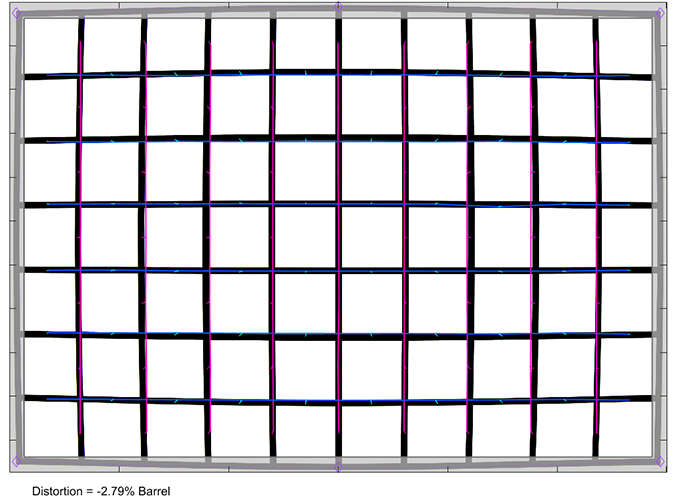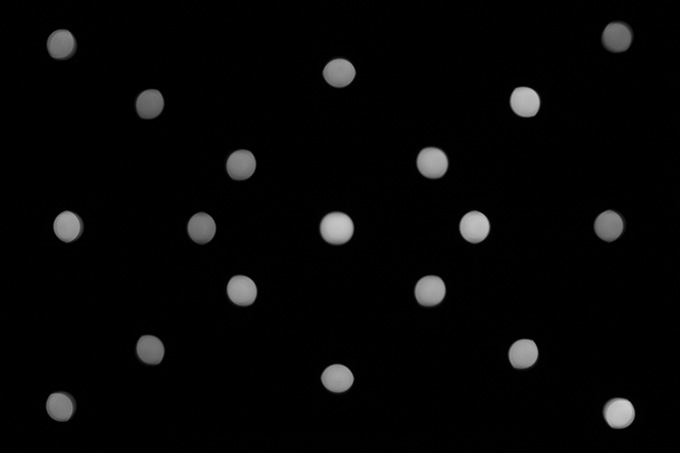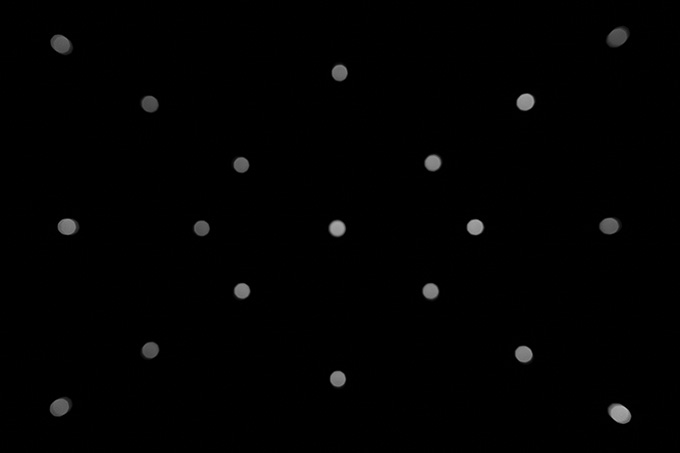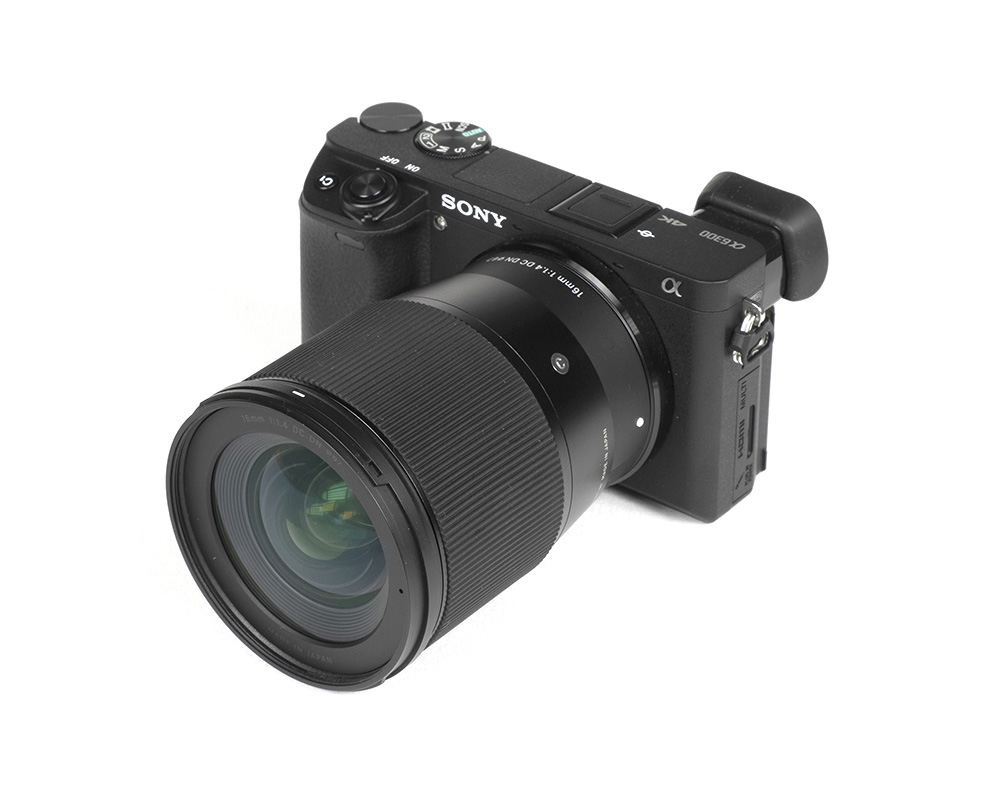Introduction
SIgma is maintaining a small set of three very fast prime lenses dedicated to APS-C and Micro-Four-Thirds mirrorless cameras – a 30mm f/1.4, a 56mm f/1.4 and the Sigma 16mm f/1.4 DC DN Contemporary that we are going to discuss here. If you are familiar with Sigma’s naming convention, it may surprise you that it doesn’t belong to Sigma’s professional grade “ART” series albeit at least the large aperture seems to suggest otherwise. However, if anything there’s a positive side effect to the consumer-grade designation – the pricing is very moderate at less the 400EUR/USD. So mirrorless lenses can be affordable after all. Thanks, Sigma!
Upon the initial contact, you will immediately notice two things. First of all, it’s not a small lens and as such it follows a bit of a Sigma tradition. Sigma tends to prefer compromising size in favor of performance. The other aspect is the build quality. It may be a “Contemporary” lens but there’s nothing cheapish about it. The lens body is made of metal. The ginormous, rubberized focus ring is super smooth. It’s almost too big when trying to get a handle on the lens for mounting/unmounting. Sigma’s statement regarding the degree of sealing is a bit fuzzy. They are referring to a sealed lens mount but this leaves a question mark regarding the focus ring at least. The lens does not extend during focusing so that’s certainly positive when it comes to surviving in harsher environments. A petal-shaped hood is part of the package.

The AF is quite fast and essentially noiseless. Typical for most E-mount lenses, manual focusing works by wire. Considering the huge focus ring, you may expect that it is a joy to use this lens in manual focus mode but, unfortunately, this is not the case here. Among all the mirrorless lenses that we tested so far – and that’s not a small number – this is the one with the worst manual focus mechanism to date. The focus “steps” are way too coarse which is a pain at short to medium focus distances. Thus as unfortunate as it may be, you should better stick to autofocusing which is reasonably accurate.
| Specifications | |
|---|---|
| Equiv. focal length (full-format) | “24mm” (in terms of field-of-view) |
| Equiv. aperture (full-format) | “f/2.1” (in terms of depth-of-field) |
| Optical construction | 16 elements in 13 groups inc. 2x aspherical, 2x SLD, 3x FLD elements |
| Number of aperture blades | 9 (rounded) |
| min. focus distance | 0.25m (max. magnification 1:9.9) |
| Dimensions | 72.2×92.3mm |
| Weight | 405g |
| Filter size | 67mm |
| Hood | petal-shaped (bayonet mount, supplied) |
| Other features | – |
| Mounts | Sony E (APS-C), Canon EF-M, Micro-Four-Thirds |
Distortion
The Sigma lens can take advantage of Sony’s auto-correction algorithms and if you choose to activate it, there’s little to worry about regarding image distortions. At less than 0.2% they are barely noticeable.
The original characteristic of the Sigma 16mm f/1.4 DC DN Contemporary isn’t quite as glorious with a fairly heavy barrel distortion of about 2.8%.


Vignetting
We can see a similar pattern when it comes to vignetting. With activated image autocorrection, you can spot just a little bit of light falloff (0.7EV / f-stops) at f/1.4 and f/2. Surprisingly, this can’t be said about the original vignetting despite the very large front element. At over 1.8EV (f-stops) at f/1.4, it’s rather massive for an APS-C format lens – although that’s still mild compared to full format counterparts. Stopping down to f/2 helps a lot already and the issue is mostly gone from f/2.8 onward.

MTF (resolution)
The resolution of the Sigma 16mm f/1.4 DC DN Contemporary varies quite about across the aperture range. The center quality is very good at f/1.4 already but there’s a rather steep drop in quality in the outer image field. The borders are merely good here and the corners are downright soft. Stopping down to f/2 boosts the quality across the frame with an excellent center, very good borders and good corners. The quality is pretty impressive at medium aperture settings though. The corners have fully recovered at f/2.8 and images are very sharp across the frame. The peak performance is reached at f/4 although the quality plateau is very broad from f2/8 all the way up to f/8. Diffraction effects are getting somewhat more pronounced at f/11 although this setting remains very usable.
The centering quality of the tested sample was acceptable only. The field curvature is low.
Please note that the MTF results are not directly comparable across the different systems!
Below is a simplified summary of the formal findings. The chart shows line widths per picture height (LW/PH) which can be taken as a measure for sharpness. If you want to know more about the MTF50 figures you may check out the corresponding Imatest Explanations

Chromatic Aberrations (CAs)
Lateral CAs (color shadows at contrast transitions) are very low peaking at an average CA pixel width of less that 0.5px at f/1.4. At medium aperture settings the CAs are virtually non-existent.

Bokeh
“Bokeh” is a Japanese word referring to the way, out of focus blur is rendered. There are two main aspects – out-of-focus (background) highlights and the rendition of contrasty objects in the focus transition zones. Given its ultra-large aperture, this is, of course, an important playground for the Sigma 16mm f/1.4 DC DN Contemporary. Let’s have a look at the “highlights” first.
Wide-angle lenses tend to show rough out-of-focus highlights but the Sigma is actually among the best in its class here. The inner zone of the highlight discs is very smooth with just a hint of a sub-structure. The edges are feathered rather than “sharp” which is how it should be really. Stopping down maintains the circular shape at f/2 and you can only see a hint of a more edgy aperture shape at f/2.8.

Typically, the shape of the discs deteriorates substantially towards the corners but the Sigma is capable of maintaining a near-circular shape even at f/1.4. This is quite impressive and probably relates to the large front element of the lens. Stopping down improves this a little bit still.
If you are wondering about the strange halos of the discs at the borders – this is related to the shape of the photodiodes used in the setup in conjunction with the field-of-view of the lens.



The general rendition of out-of-focus areas isn’t quite as good, unfortunately. The background blur is decently smooth but the contrast suffers somewhat (shown to the left below). The foreground blur (to the right) is rather distracting with a substantial amount of smearing.

Sample Images
Competition
There isn’t really any APS-C format lens that competes directly with the Sigma 16mm f/1.4 DC DN Contemporary (shown to the left). If we include full format lenses there may be two alternatives that come into mind. Size-wise the Laowa 15mm f/2 Zero-D (center) is at least somewhat similar. It’s obviously a little wider and a stop slower. Its biggest drawback is the lack of electronic coupling – thus also no AF. It should perform nicely on an APS-C format camera thanks to the sweet spot effect within the (full format) image field. The Sigma 14mm f/1.8 ART is closer in terms of optical specs but it’s obviously a very different, much bigger beast and rather alien on small APS-C cameras – also because it’s merely an adapted DSLR lens.

Visual comparison courtesy of camerasize.com.
While there are numerous fast, full format E-mount lenses available, they are very expensive and simply oversized when mounted on APS-C cameras. Sony showed little interest in providing dedicated APS-C prime lenses lately so it's most welcome that Sigma has taken the leap of faith by providing some new and interesting designs for the smaller format. The Sigma 16mm f/1.4 DC DN Contemporary is about as fast as it can reasonably get without running into a cost trap especially considering the rather wide-angle of view - equivalent to a "24mm" full format lens. Performance-wise it is pretty good but it has a couple of weak spots, too. At maximum aperture, the center resolution is very decent but the corner quality falls apart. Whether sharp corners at f/1.4 are really important is a question of application. For astrophotography, it's clearly not ideal whereas for shallow depth-of-field scenes, it's hardly relevant. Stopping down to f/2 helps a lot in the image corners and the results are sharp across the image field from f/2.8 onward until diffraction effects set in. The native vignetting characteristic could be better and image distortions are on the high-side. However, this isn't too much to worry about with activated auto-correction. Lateral CAs are generally very low. The quality of the bokeh is a bit of mixed bag with very nice out-of-focus highlights but also with a fairly smeary general bokeh rendition.
The overall build quality is very good. The lens body is made of metal and the huge, rubberized focus ring is both smooth as well as very grippy. It also has basic sealing of some kind. On the downside, manual focusing is way too coarse to be useful at shorter focus distances. The AF is quite speedy and noiseless though.
The Sigma 16mm f/1.4 DC DN is may not be flawless but given the very reasonable pricing, it's a great value offering.
-
Optical Quality
-
Build Quality
-
Price / Performance


